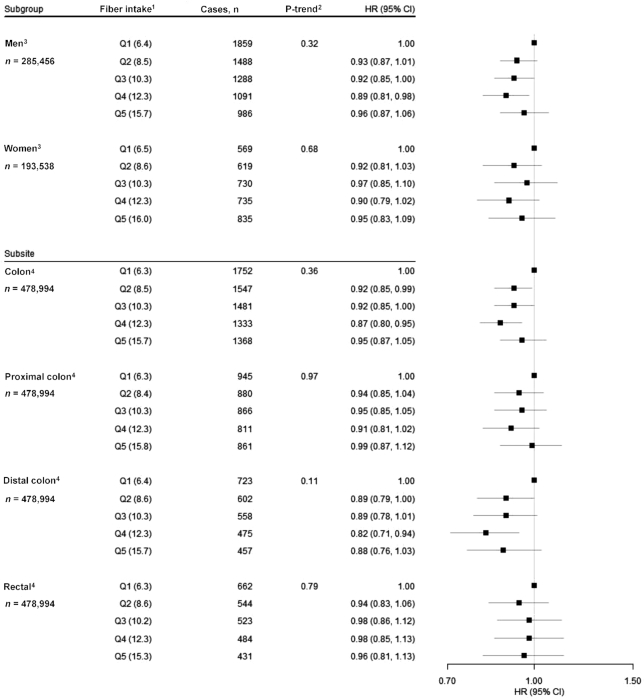FIGURE 3.
Associations for dietary fiber intake and risk of CRC, using quintile 1 as the reference, stratified by sex and examined by CRC subsite (i.e., total colon, proximal colon, distal colon, and rectal cancer), in the NIH-AARP Diet and Health Study (n = 478,994). 1Quintiles of dietary fiber intake (median g . 1000 kcal−1 . d−1). 2P-trend < 0.05. All statistical tests were 2-sided. 3Cox proportional hazard model adjusted for age (continuous), BMI (in kg/m2) (<18.5; 18.5 to <25; 25 to <30; ≥30; missing), alcohol (0 drinks/d; <1 drink/d; 1 to <2 drinks/d; 2 to <3 drinks/d; ≥3 drinks/d; missing), general health status (excellent; very good; good; fair; poor; unknown), first-degree relatives with colon cancer (yes; no; unknown), race/ethnicity (non-Hispanic white; non-Hispanic black; Hispanic; Asian, Pacific Islander, or American Indian/Native American; unknown), education (<12 y; 12 y or completed high school; post–high school training other than college; some college; college and postgraduate; unknown), physical activity (never, rarely; <3 times/mo; 1–2, 3–4, or ≥5 times/wk; missing), smoking (never; ≤20 cigarettes/d in the past; >20 cigarettes/d in the past; ≤20 cigarettes/d currently; >20 cigarettes/d currently; missing), menopausal hormone therapy in women only (never; past; current; missing), and intakes of red and processed meat (quintiles), dietary calcium (quintiles), folate (quintiles), and total energy (continuous). P-interaction = 0.49. 4Adjusted for all covariates in the previous model and sex. CRC, colorectal cancer.

